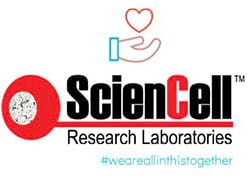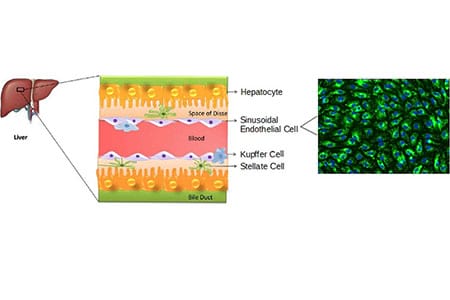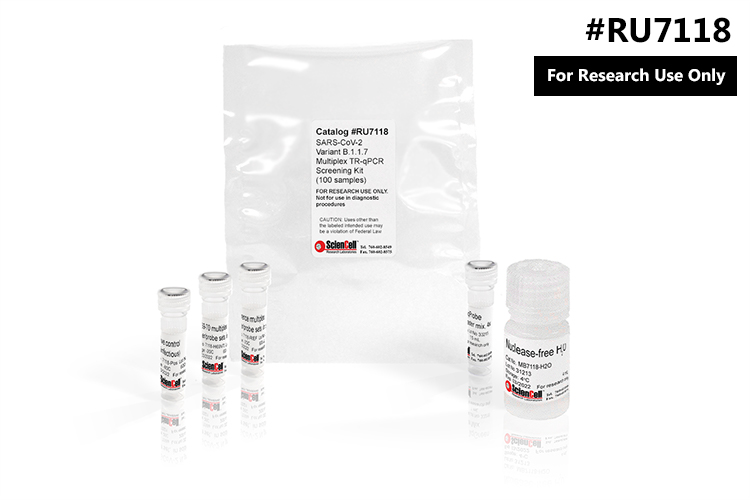

与SARS-CoV-2相关的博客文章
The Many Faces of Hepatic Sinusoidal Endothelial Cells by Jennifer Welser, PhD
Hepatic sinusoidal endothelial cells (HSEC) are fascinating cells that are uniquely adapted to their location in the liver. HSEC are found lining microvessels in the liver and are extremely specialized endothelial cells. Structurally and functionally they have distinctive features which include: open pores known as fenestra which form sieve plates, a lack of an organized basement membrane, expression of scavenger receptors, and performing endocytic activity. Notably, HSEC are highly permeable and play a critical role in removing bloodborne waste. To perform the endocytic function, HSEC express a vast array of scavenger receptors as well as the mannose receptor, which allows them to collect molecules from the bloodstream and transport them to the hepatocytes.
What role do alveolar epithelial cells play in COVID-19 disease progression? by Aye Mon, PhD
SARS-CoV-2 is the seventh known coronavirus that causes the human disease known as COVID-19. The virus can grow in cells lining the conducting airways and in alveolar epithelial cells. First, the virus generally enters the body through the nose or mouth. From there, the virus travels down into the alveoli which are located in the lungs. Once in the alveoli, the virus “hijacks” cells to make new copies of the virus. The infected cell is then killed, releasing new viruses to infect neighboring cells in the alveolus. Each sac of air, or alveolus, is wrapped with capillaries where red blood cells release carbon dioxide (CO2) and pick up oxygen (O2). Two alveolar epithelial cells (type I and II) facilitate gas exchange. Type I cells are squamous alveolar cells with thin membranes that perform gas exchange. Type II cells are known as progenitor cells in the alveoli and proliferate and differentiate into type I cells. In addition, Type II cells secrete the pulmonary surfactant that lines the alveolus and prevent it from collapsing.
Airway Epithelial Cells: Coronaviruses’ gateway to infection by Jennifer Welser, PhD
Epithelial cells are the most numerous cells in the lungs and contribute to innate and adaptive immunity. Airway epithelial cells are located in the lower respiratory tract which includes the trachea, bronchi, small airways (bronchioles), and alveoli. Due to their location, airway epithelial cells are constantly exposed to microbes, particles, and pollutants and are essentially the first line of defense against invading pathogens. Airway epithelium acts as a physical barrier and either directly remove pathogens or interact with immune cells which initiate the clearance of pathogens. Epithelial cells also play an important role in reducing inflammation and maintaining homeostasis in the lungs. During an infection, epithelial cell dysfunction can contribute to the development of inflammation of the airways and lungs. Additionally, patients with chronic pulmonary disease are more susceptible to respiratory infections due to defects in epithelial barrier structure and function.
ScienCell Acts to Help Aid Research for Coronavirus SARS-CoV-2 by Daniel Li, PhD
As of April 10, 2020, the number of U.S. SARS-CoV-2 coronavirus cases surpassed 500,000 with a death toll near 19,000. For over a century, coronaviruses were thought to only cause mild illnesses such as the common cold. With the outbreak of the 2002-03 SARS (severe acute respiratory syndrome) that was caused by SARS-CoV coronavirus, this concept was rapidly overturned, and as a result coronavirus research has geared up for the fast lane.
Coronaviruses are a family of large, single-stranded RNA viruses with size ranging from 26 to 32 kb. Like other viruses, coronaviruses proliferate by invading cells, manipulating the cells into making many copies of the virus, and infecting more cells. As an RNA virus, the coronavirus lacks error-repairing mechanisms during replication, and therefore, has a relatively high mutation rate resulting in rapid evolution.
ScienCell 的 SARS-CoV-2 产品
SARS-CoV-2 变异 B.1.1.7 多重 RT-qPCR 筛选试剂盒(产品目录编号:RU7118,100 个样品)
ScienCell 的 SARS-CoV-2 变种 B.1.1.7 多重 RT-qPCR 筛查试剂盒 (SCVUK) 设计用于检测样本中是否存在 SARS-CoV-2 病毒,并通过检测尖峰-HV 69-70 缺失来筛查是否可能存在 B.1.1.7 系。
ScienCell 的 SARS-CoV-2 信息
尊敬的客户:
在我们都在应对 COVID-19 疫情带来的挑战时,我们的心与您和您的家人同在。在这场危机中,我们仍然坚定地支持我们的社区和使命。
作为一家必要的企业,ScienCell 按照最新的公共卫生命令继续运营,同时调整我们的操作程序,以最大限度地提高安全性并减少感染风险。我们将继续优先考虑我们敬业团队成员的安全,同时为研究社区,特别是那些致力于寻找 COVID-19 爆发解决方案的人员,提供重要的工具。
我们正与我们的运输合作伙伴紧密合作,确保始终如一的高质量交付。由于运输限制,交货时间可能会比平时稍长。然而,我们正在采取预防措施,确保温度敏感的物品能够妥善到达,包括使用额外的包装并提供可选的升级运输服务。
代表 ScienCell 的全体员工,我们祝愿您和您的家人保持健康与安全。
诚挚的问候,
ScienCell 研究实验室有限公司













